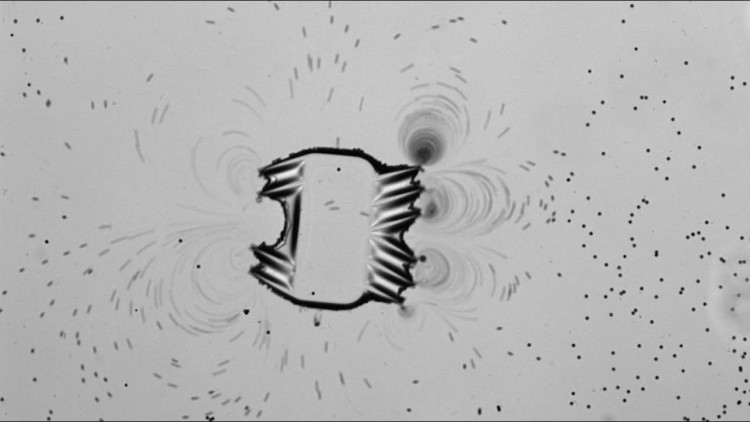ETH Zurich researchers have developed a microscopic robot that moves like a starfish larva. Like its natural model, it is propelled by sound waves and has tiny hairs that direct fluid around it.
In the future, such microswimmers may be able to precisely deliver medications to diseased cells.
Cilia cover hundreds of thousands of tiny hairs on starfish larvae, which are only a few millimeters long. By producing vortices in the water around them, the organisms use them to both navigate about and feed.
The larva develops thrust by orienting two rows of cilia towards each other, but directing them apart creates a vortex that draws microscopic food particles in.
Researchers at ETH Zurich began their new study by seeing whether they could construct a little swimming robot that could navigate in the same way. They utilized lasers to etch tiny cilia into the device, which were then moved by ultrasound waves.
The cilia were programmed to oscillate at a rate of over 10,000 times per second, far faster than starfish larva can manage, according to the researchers.
To better visualize the flow, the microrobots were tested in water containing microscopic beads. And, indeed, the device produced flow patterns that were strikingly similar to the real animals that inspired it.
The researchers demonstrated that it can swim in a straight line by utilizing its cilia to generate a suction vortex in front and a push vortex in back.
In another experiment, the rows of cilia were positioned side by side to produce a suction vortex and a thrust vortex, allowing the robots to suck in beads and spit them out in a certain direction.
The microrobots, according to the researchers, could one day be employed to distribute medications throughout the body. Meanwhile, the ultrasound-activated cilia might be used to manipulate small amounts of liquids, such as mixing, pumping, and trapping particles.
This starfish-inspired design, in addition to medical uses, is expected to have significant ramifications for the manipulation of tiny liquid volumes in science and industry, according to the scientists. Mixing, pumping, and particle trapping might all be done by bands of beating cilia.
The findings were published in the peer-reviewed journal Nature Communications. In the video below, you can see the microrobots and starfish larvae in action.




